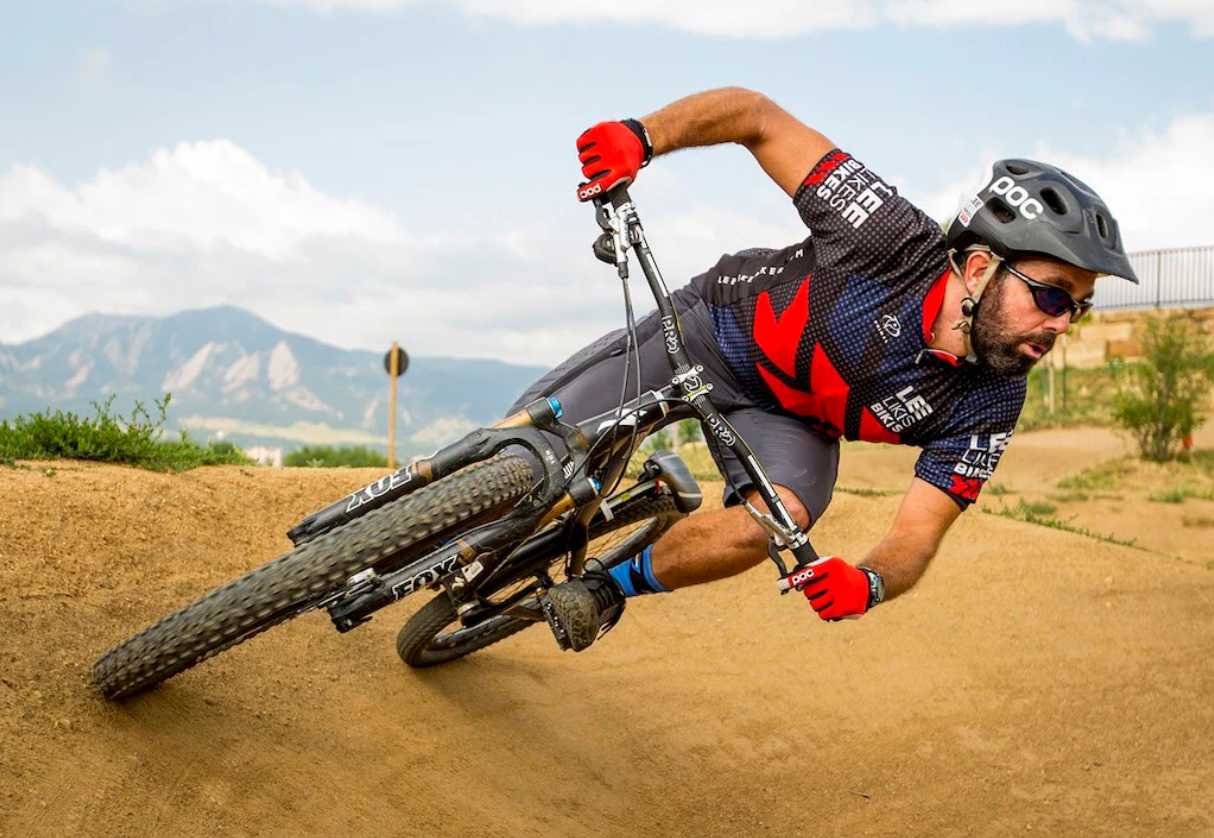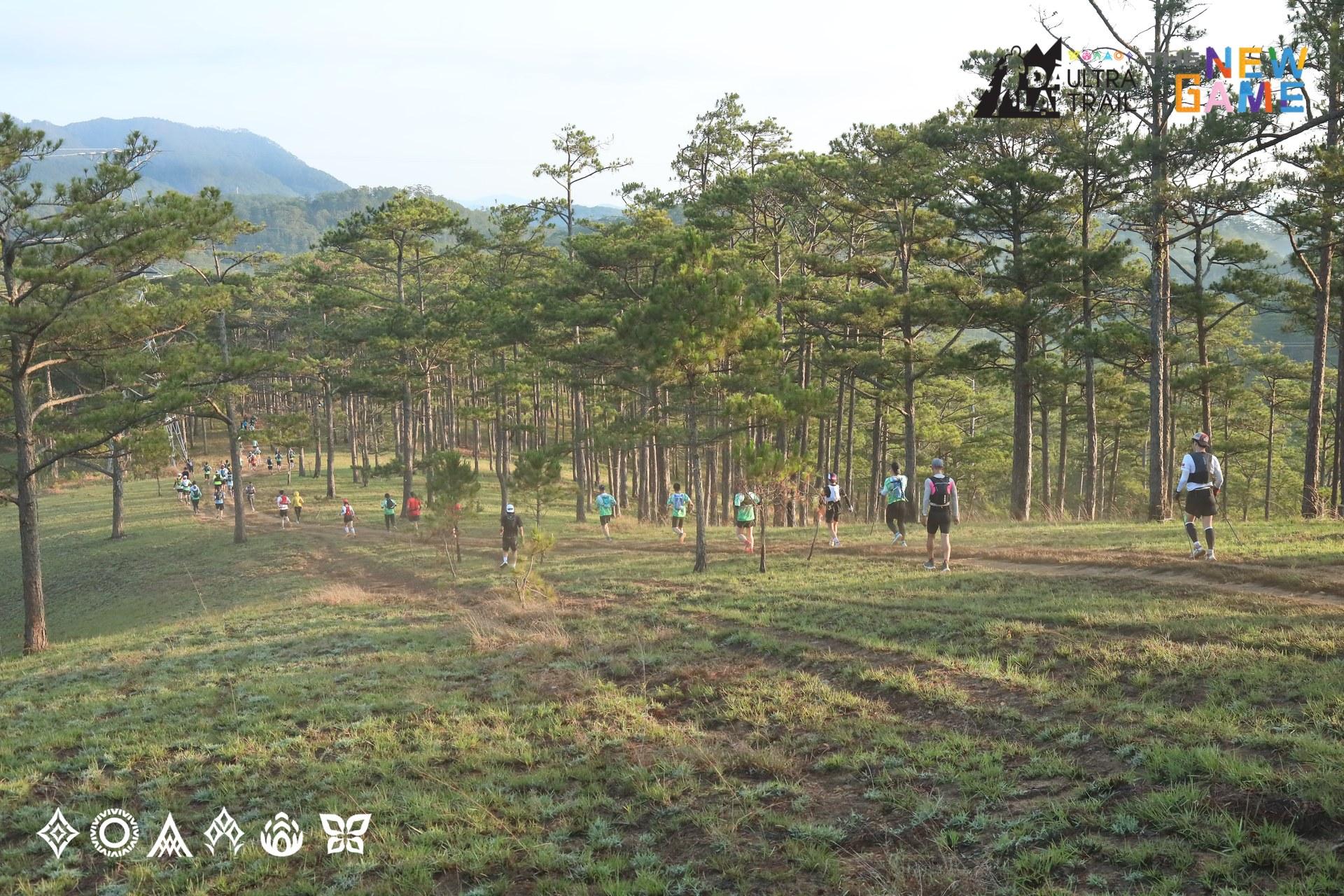
10/17/2025
MOUNTAIN BIKING ESSENTIAL GUIDE FOR BEGINNERS
Mountain biking essential guide for beginners: choosing gear, bike types, and mastering trail etiquette.
Many mountain biking beginners are often overwhelmed by the plethora of concepts, gear, and complex techniques. To ensure your journey of discovering nature and pushing your limits isn't interrupted, this guide by Vietnam MTB Series will walk you through the steps to get started with mountain biking: from selecting the right bike, preparing essential gear, to mastering basic techniques to confidently conquer any trail.
Understanding the Sport of Mountain Biking
Mountain biking is an adventurous sport where athletes ride bicycles on rough terrain such as mountains, forests, or deserts. Due to the harsh nature of the terrain, mountain bikes feature specific characteristics like large, knobby tires and suspension forks.
The sport is also distinctly branched into several formats:
- Downhill: Focused on riding down slopes, often taking place at resorts with lift systems to transport riders and bikes to the top.
- Cross-Country: Riding on natural trails such as grass, dirt, mountains, forests, or snow.
- Enduro: A racing format where only the downhill stages are timed, but athletes must pedal themselves up to the starting point before each stage.
- Freeride: A style of freestyle riding that includes downhill, jumps, and obstacle clearance, combining individual skill and rider calculation.
Mountain bike races typically occur on narrow single-track trails. To preserve the trail's vegetation and avoid unintentionally widening or breaking the path's structure, mountain bikers often choose to stay on the correct line rather than making detours.
Mountain biking is an excellent activity for maintaining health, reducing stress, and building a community with others who share a passion for exploration.
How to choose the right mountain bike
The most critical factors when selecting a mountain bike are proper fit and good working condition.
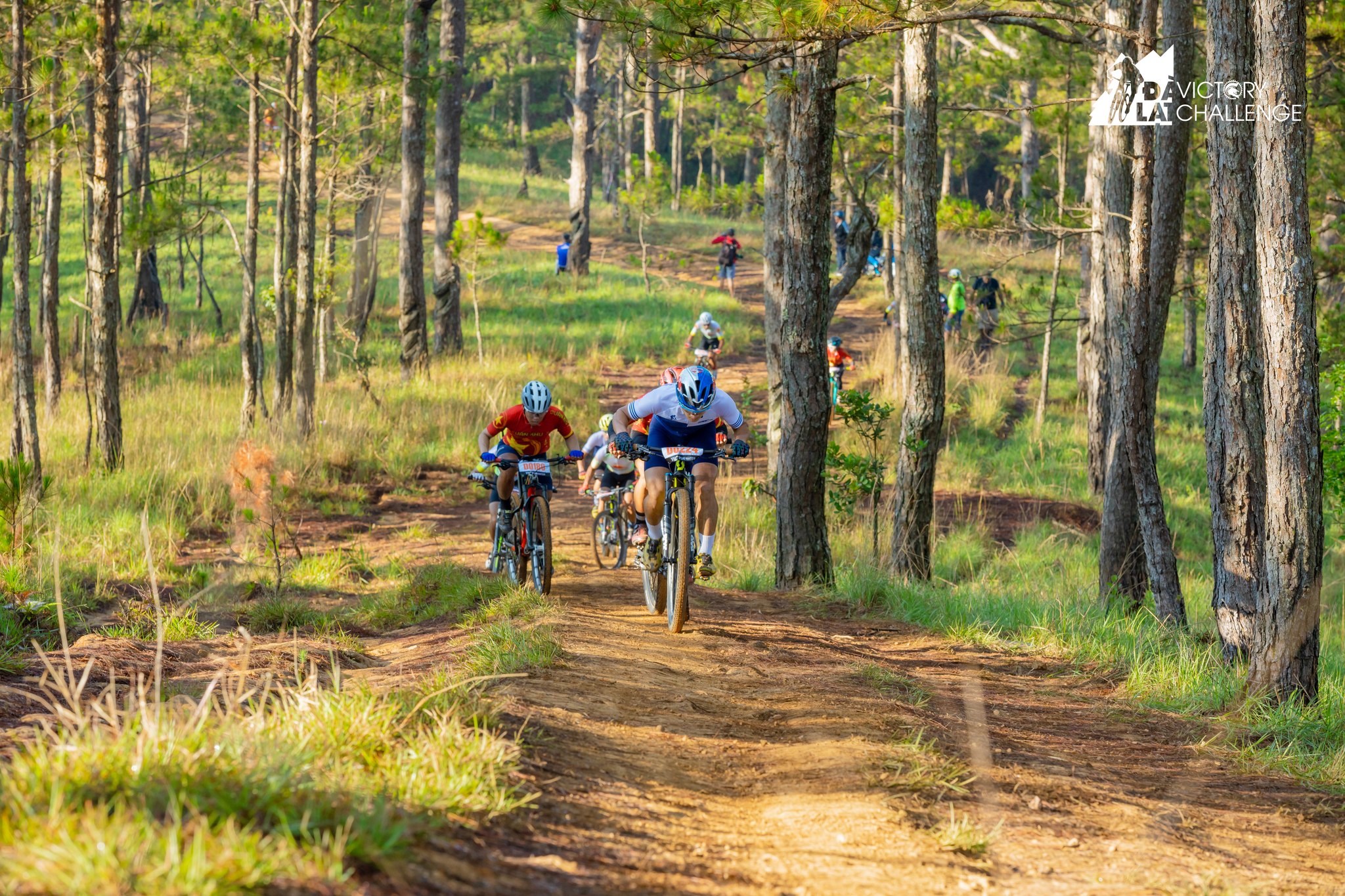
Depending on size and preference, each person can choose the type of vehicle that suits them.
Bike sizing
Modern mountain bikes come in a variety of sizes, with adjustable saddle heights and handlebar positions. Always choose a frame that matches your height based on the manufacturer's size guide. Don't hesitate to seek advice from friends or local bike shop staff for the best choice.
Inspection and maintenance (Tune-Up)
As a beginner, most bikes manufactured in the last five years are adequate for initial training, helping you learn the necessary skills. Later, once you better understand your preferences, you can upgrade to a more suitable bike. To be more economical, you can start with an affordable used bike to gain experience.
The most important focus is the operational status of key components, including the brakes, drivetrain, and suspension system. The simplest and most effective way to ensure this is to take your bike to a local shop for a full tune-up, which will make your riding experience safer and more complete.
Types of mountain bikes
1. Full-suspension bikes
This is one of the most common types today, featuring both a front fork and rear shock to absorb impacts, providing a smoother ride.
In the full-suspension category, you'll see numbers like 80, 150, and 220, which represent the millimeters (mm) of suspension travel. Larger numbers generally mean a heavier and slightly less nimble bike.
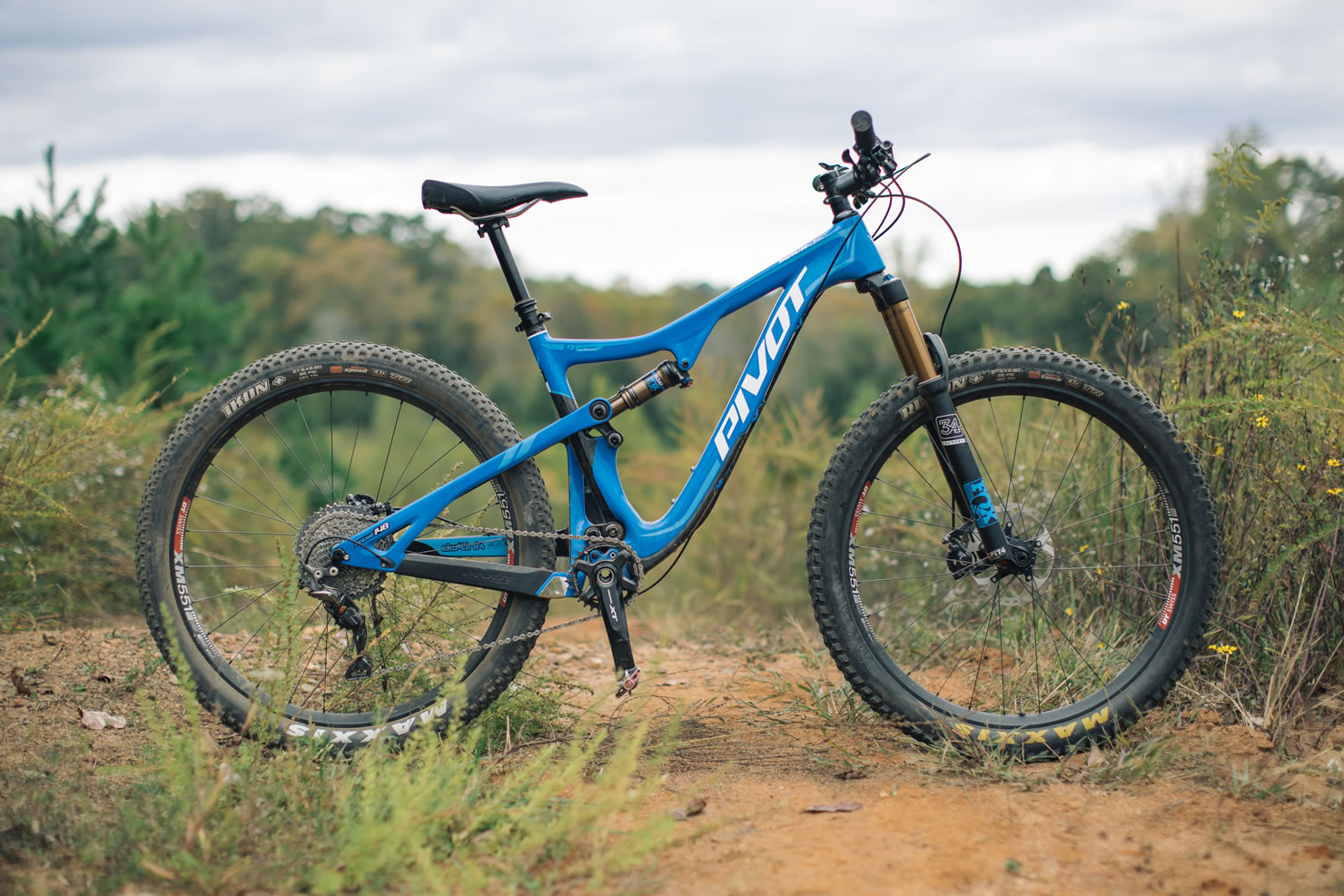
Full-suspension bikes is one of the most popular bikes. (Image source: BIKEPACKING)
2. Adaptive mountain bikes (for riders with disabilities)
These are designed to accommodate disabilities.
- Features can include three wheels for stability, an electric motor to assist those with reduced motor function or hand cranks instead of foot pedals.
- Adaptive bikes typically include suspension and various customizations.
3. Hardtail bikes
This is the cheapest option, often chosen by beginners to save costs. However, because of lacking a rear shock, they offer a tougher ride on rocky or rough trails.
This forces riders to improve their technique and line-choice skills, as they cannot rely on the bike to absorb the terrain.
4. Fully rigid bikes
This type has no suspension whatsoever and requires maximum finesse from the rider, who must manually absorb trail impacts.
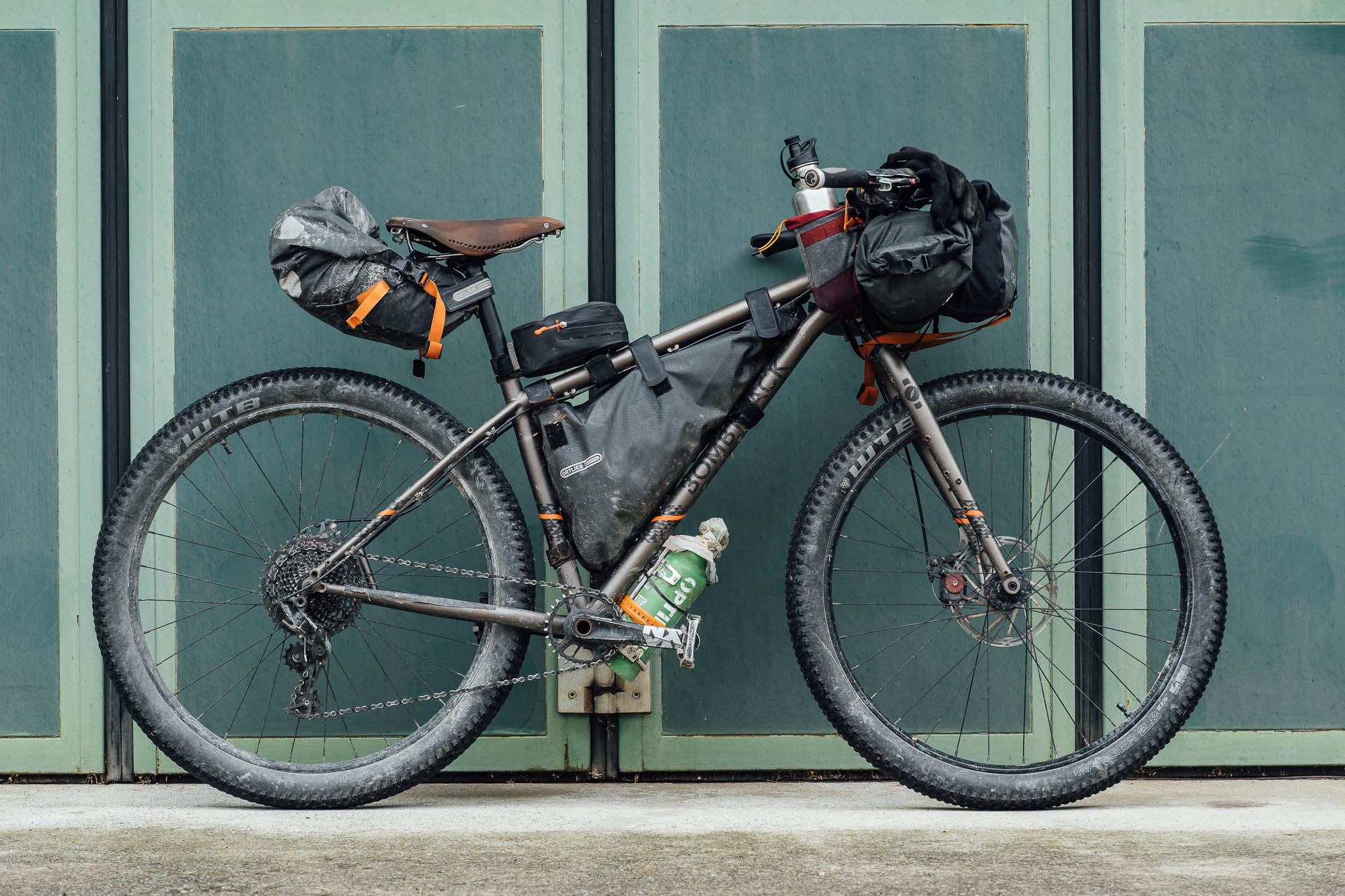
Rigid frame bikes are a complete challenge for beginners (Image source: BIKEPACKING)
Wheel size
The two most common wheel sizes for adult bikes are 27.5 inches and 29 inches. Most bikes use the same size wheels front and rear.
However, the "mullet" configuration (27.5 inches in the rear and 29 inches in the front) is gaining popularity. This configuration capitalizes on both advantages: the larger front wheel maintains capability and speed, while the smaller rear wheel keeps the bike feeling more agile.
Essential mountain biking gear
Like most other sports, mountain biking requires specialized gear to enhance enjoyment and reduce risk. As a beginner, you need to focus on a few minimum items that can significantly impact your ride from the start.
Helmet
1. Half-shell helmet
This helmet is similar to road bike helmets but extended further down the back of the head for better protection in case of a backward fall.
Beginners of mountain biking can choose this type of helmet because it is comfortable, comes with adjustable straps and inner fit hardware, and is well-ventilated.
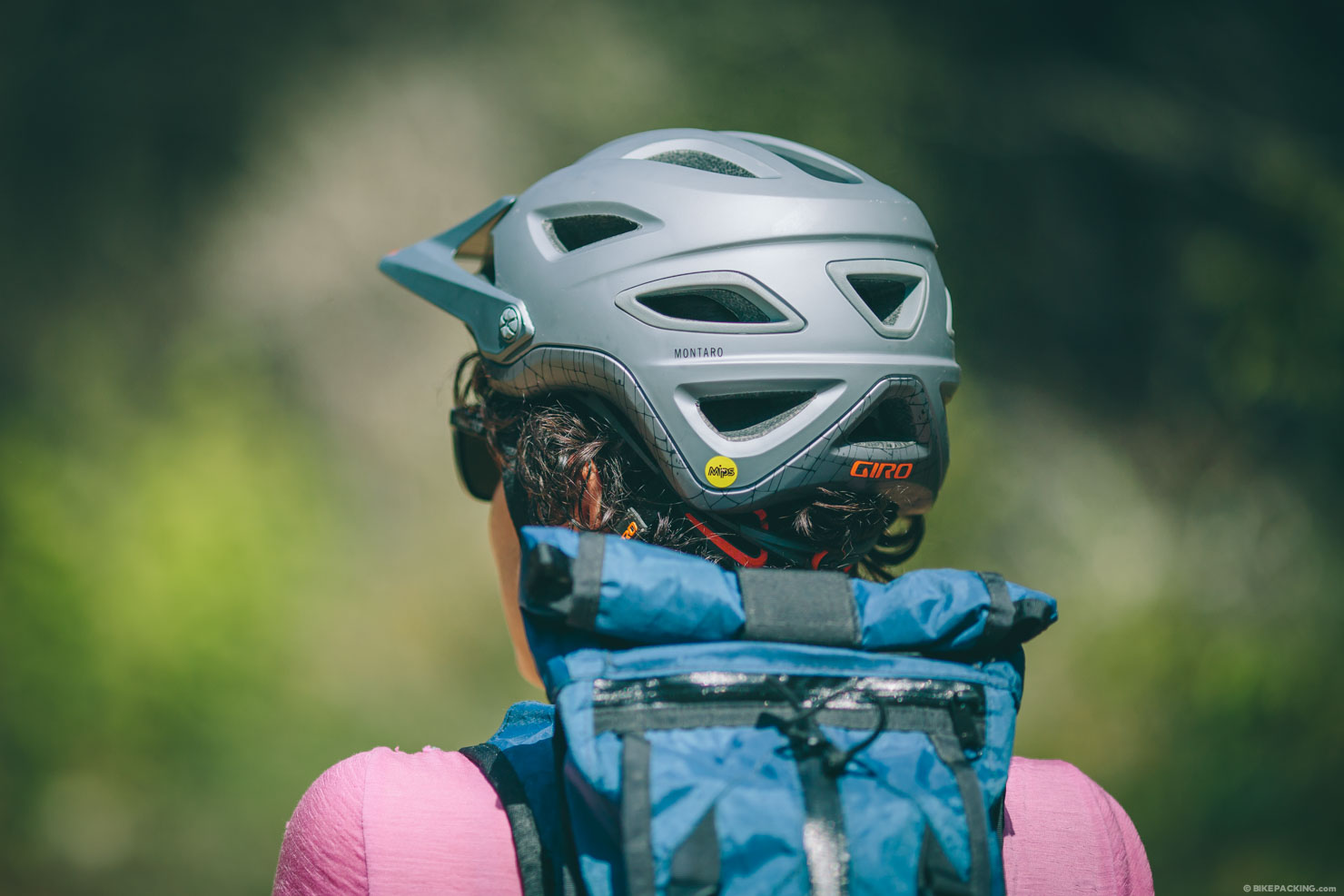
Image source: BIKEPACKING
2. Full-face helmet
It features extended protection around the front of the face, especially the jaw. These are for riders focused on downhill rather than cross-country. The added protection is necessary for high-speed falls or jumps, despite being less ventilated and heavier than half-shells.
Sunglasses and goggles
You should invest in dedicated MTB sunglasses or goggles, depending on your riding location and helmet.
1. MTB Sunglasses
MTB Sunglasses is designed to be larger across the face to protect against UV, dust, and debris. Some are compatible with helmets. Lenses are often interchangeable to suit various light conditions, from bright sun to heavily forested trails or dawn/dusk.
2. Goggles
Goggles is often paired with full-face helmets for enhanced protection against dust and debris. They are especially useful during high-speed downhill riding when debris is kicked up by riders ahead. Like sunglasses, goggles often have interchangeable lenses.
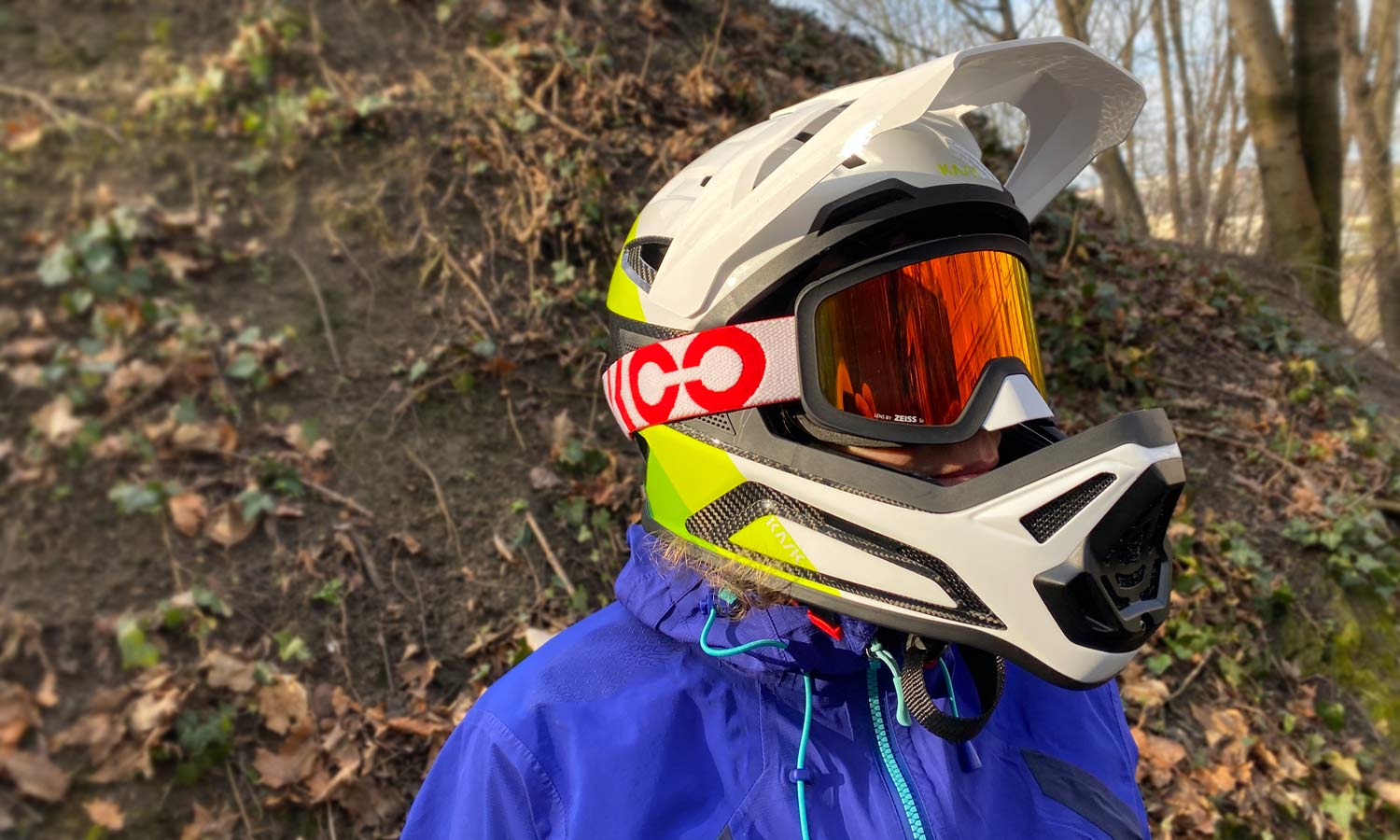
Image source: BIKEPACKING
Mountain bike shoes
While you can start with any athletic shoe, dedicated MTB shoes allow you to pursue your passion more safely.
Riders choose different soles based on need, such as stiff soles to prevent foot fatigue during descents or sticky rubber soles to prevent slipping off pedals on rough terrain.
Many mountain bikers prefer clipless shoes (with cleats) that physically attach the foot to the pedal and can be released with a slight foot rotation.
Meanwhile, some beginners use pedals with small pins that are attached to the rubber sole of the shoe to prevent slipping. This helps beginners feel more confident because they can get off the pedal at the right time if necessary.

Mountain bike shoes for a better experience (Image source: BIKEPACKING)
Chammy (Padded Liner)
MTB shorts often come with a padded liner called a chammy. It is worn directly against the skin to prevent chafing, reduce pressure points, and cushion the sit bones against the saddle.
The chammy is worn under baggier outer shorts that protect against foliage or ground impact during a fall. Not all riders prefer a chammy, so riding with regular comfortable shorts is also an option.
"Chammy Butter" is a lotion used to decrease friction and provide a topical protective layer. It can be used with or without a chammy, though the combination is often most effective.
Pads and protection
Protective pads are the most common way riders shield themselves from potential impacts.
Knee and elbow Pads are excellent for beginners in case of tumbles.
Collarbone and back guards are particularly necessary for riders tackling faster, steeper trails or bigger jumps.
Protection styles vary depending on whether you ride cross-country or downhill. If possible, try pads on in-store and consult size guides to ensure a proper fit.
Gloves
You should consider gloves to prevent blisters, stop hands from slipping off the grips in hot weather, or keep them warm in cold weather.
Unlike road cycling gloves, MTB gloves have little to no padding, allowing the rider the best contact with the handlebars, as the bike's suspension typically reduces the need for padding.
Basic riding techniques
As a beginner, you must spend time familiarizing yourself with the bike, even by just riding around the neighborhood to practice balance. Be patient, embrace the learning process, and accept that making mistakes is part of it. Taking clinics, working with a coach, or riding with experienced friends offers significant learning benefits.
Body position
While mountain biking, beginners should remember to maintain their body weight over the bike's center of gravity. When descending, stand on the pedals instead of sitting on the saddle to allow your body to move with the terrain.
Unlike some old thoughts, modern bikes are designed to handle steep descents without the rider needing to shift their weight excessively far back over the rear tire.
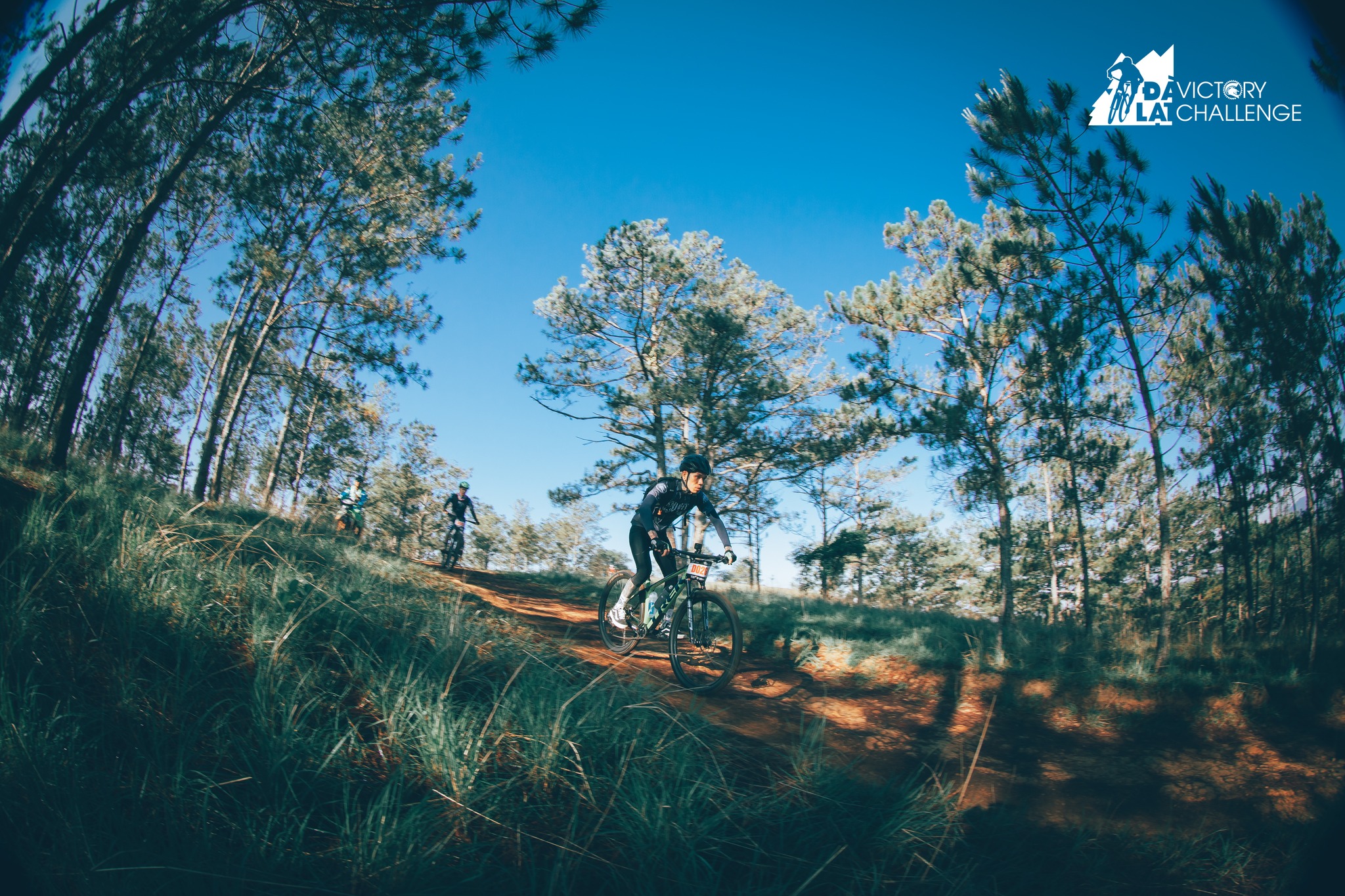
Cycling posture when going downhill
1. Dropper post
Most bikes are equipped with a dropper post, which is a seat post adjustable via a handlebar lever.
When going downhill, people can drop the saddle for descents to keep their center of gravity lower and increase stability. By contrast, mountain bikers raise the saddle again for climbs to utilize full leg extension for pedaling while uphill. Learning to use it properly enhances comfort and safety.
2. Cornering
Some turns are bermed, meaning the corner is built up and slanted, similar to a high-speed curve on a highway. This design allows the wheels to push into the dirt for better traction and helps align the bike and rider’s center of gravity with the trail’s direction. In these scenarios, the rider should simply keep their weight more or less centered over the bike.
For flat corners, a rider might need to lean the bike slightly while keeping their body weight upright and centered. This technique ensures pressure and weight are maintained over both the front and rear tires.
Cornering is undoubtedly one of the trickiest, yet most useful, techniques for new mountain bikers to learn. Therefore, if possible, seek guidance from a coach, clinic, experienced friend, or even a YouTube video.
Pay attention to the cornering posture of athletes or coaches so you can learn more easily (Photo source: The Pro's Closet)
Shifting gears
Proper shifting keeps your ride smooth and, consequently, safer.
Uphill: When climbing, you should downshift (making the pedals easier to spin) as the trail steepness increases. The goal is to better maintain your pedaling cadence.
Downhill: When descending, you should upshift (making the pedals harder to spin) before gaining full speed. This ensures that when you need to pedal again, you won't "spin out" and lose momentum or risk being knocked off balance due to a lack of resistance against your pedal stroke.
Gear configurations
Most modern mountain bikes only have gears in the rear, known as a "1 by" or "1x" setup, meaning you only shift with your right hand.
This differs from older bikes that often had two or three chainrings in the front. The reason for the change is that modern rear cassettes can offer a gear ratio range similar to the older "2 by" systems.
Some bikes, called "single speed" mountain bikes, have only one gear. Riders on these bikes must rely on strength and technique to manage changes in terrain instead of shifting. The advantage is that single speeds are typically lighter than geared bikes, as they lack the added weight of the drivetrain components.
Braking
Braking technique takes time to master. When you first start biking, use both brakes simultaneously to prevent the sensation of going over the handlebars if you only grab the front brake.
You should apply even, pulsing pressure on both levers to slow the bike down in a controlled manner without skidding.
As you progress, you can experiment with varying pressure on either or both brakes for different stopping results.
Trail etiquette and safety tips
Uphill traffic has the right of way
Typically, uphill traffic has the right of way when biking. If you are on a two-directional trail and are going downhill, be prepared to stop and pull aside to yield to those going uphill. This is because stopping a bike on an uphill section in a spot where it's difficult to get moving again is challenging.
There are a few situational exceptions. For example, people going uphill might occasionally need a moment to catch their breath and can signal you to pass; or larger groups may choose to pull over to let a single rider pass, as the solo rider is likely moving faster, and a large group can have a greater impact on other users.
The User-Yield Triangle
On multi-use trails, where various user groups (like dirt bikers, mountain bikers, hikers, horseback riders, etc.) are permitted, a generally accepted "user yield triangle" is followed to reduce conflict and ensure safety.
General Principle:
- Motorized users must yield to non-motorized users.
- Wheeled users must yield to pedestrians (users on foot).
- All users must yield to horses or other animals to avoid spooking them.
E-bike Etiquette
As more trail systems allow the use of e-bikes, the need for proper etiquette is increasing.
Yield Principle: Based on the user-yield triangle, e-bikes must always yield to non-motorized bikes.
Because e-bikes can climb much faster than analog bikes, caution must be exercised when overtaking from behind. Call out your presence to the rider ahead, making it clear that you are in no hurry to pass until they can find a safe, comfortable spot to stop and pull over.
Motorized users should pay attention to trail signage to avoid unnecessary conflict.
This concludes the initial guidance intended to provide preliminary information for those interested in or new to mountain biking. The most important thing is to maintain an open mind, be willing to learn, and seek help. Don't compare yourself too much to the achievements or progress of others, because ultimately, with any hobby or passion, you always need a comfortable spirit and enjoyment to sustain it.

(Reference: BIKEMAG)
